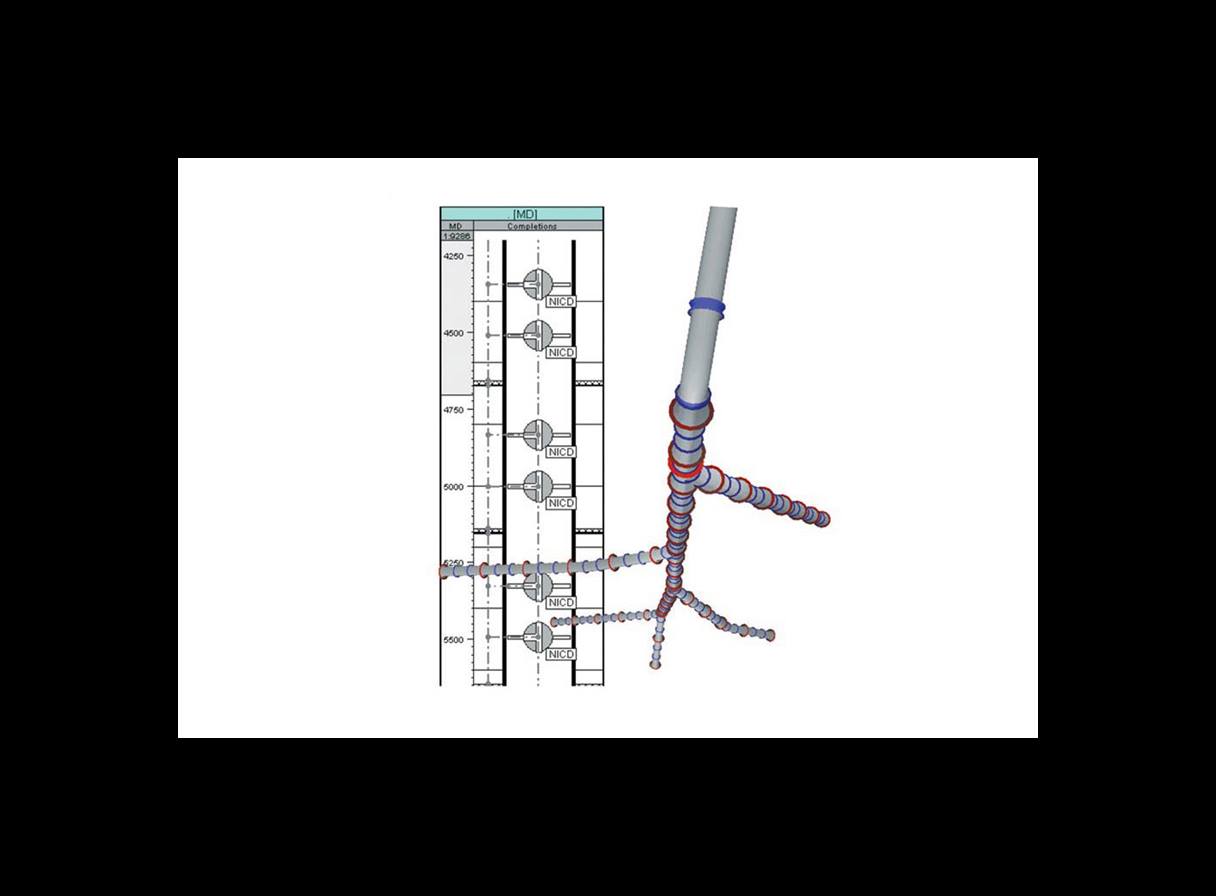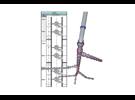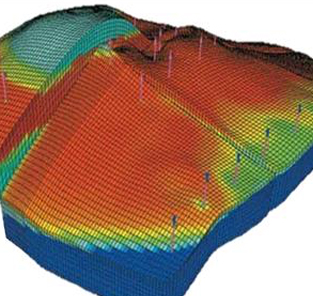Improved handling of multilateral topology
The well trajectory is discretized into a series of segments that are linked together into branches. Branches can, if required, have sub-branches.
Improved modeling of multiphase flow
Use of the drift-flux model or precalculated pressure drop tables can produce more accurate pressure gradients than the homogeneous flow treatment used in other well models. The pressure gradient can vary from segment to segment throughout the well and is calculated fully implicitly in each segment using the local flowing conditions.
Flexibility
The number of connections to the reservoir simulation grid can vary per segment, allowing the choice between using many segments for greater accuracy or fewer segments for faster computation.
Modeling of flow control devices
Specific segments can be configured to model flow control devices, such as chokes and valves. The Eclipse simulator contains many built-in devices such as flow limiting valves, labyrinth devices, and downhole separators—other devices can be modeling by providing a pressure drop table which describes its pressure loss characteristics.
Include flow paths in both the annulus and the tubing
Branches can be defined in both the annulus and the tubing and segments can be joined into looped flow paths to represent multiple contact points between the two.
Improved modeling of crossflow
Crossflow can be modeled more realistically as the fluid mixture can vary throughout the well. Complex crossflow regimes may potentially occur in multi-lateral wells, including branch-to-branch crossflow and crossflow within individual branches.
Improved wellbore storage modeling
Wellbore storage effects can be modeled more accurately using the segment structure. The drift-flux model allows phases to flow in opposite directions at low flow rates so that phase redistribution within the wellbore can occur during shut-in well tests.



